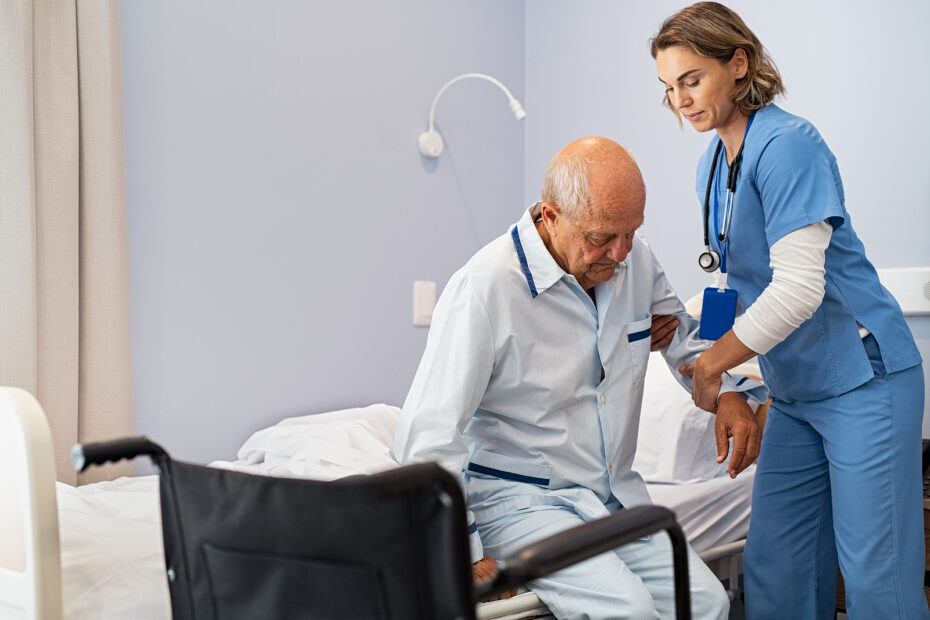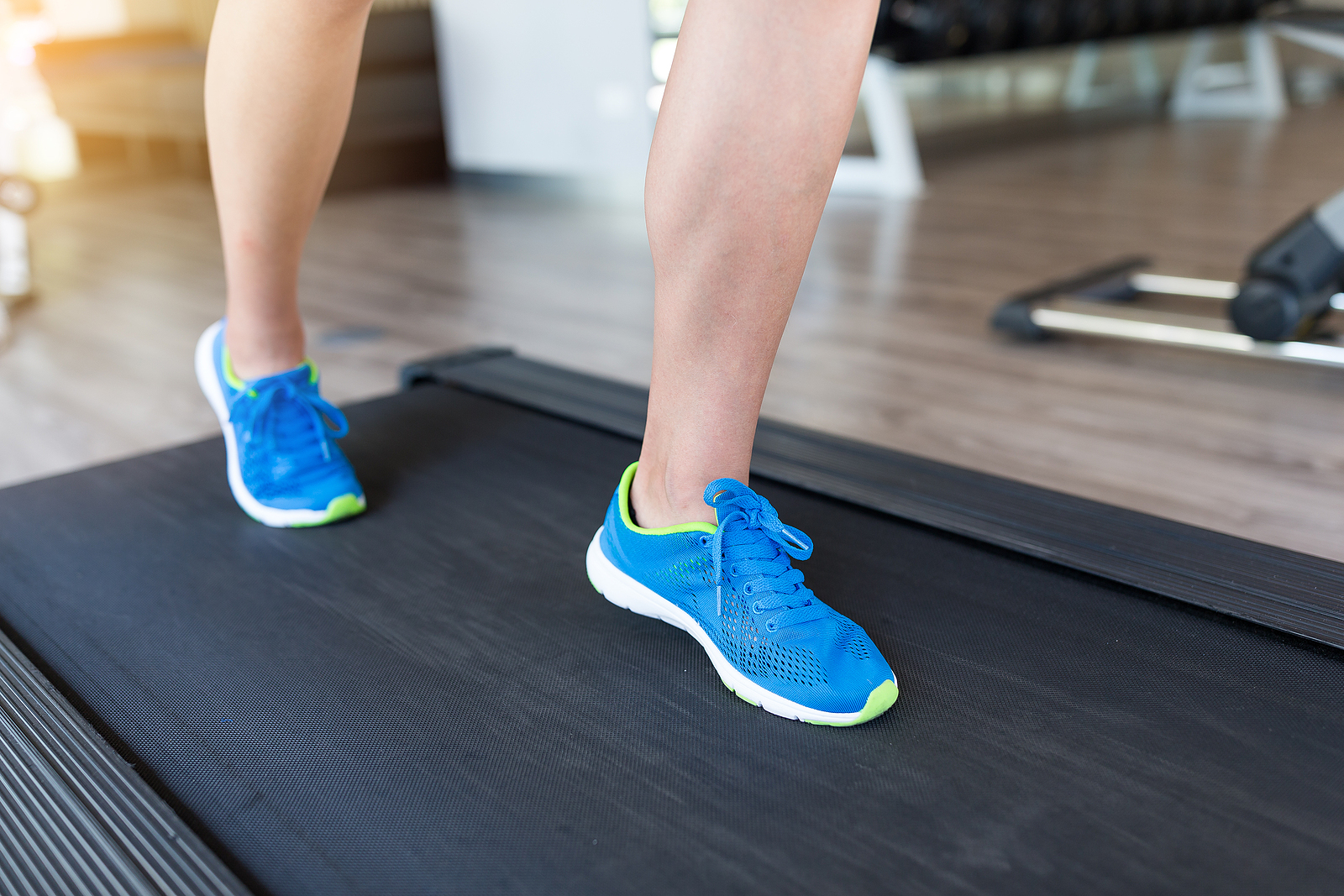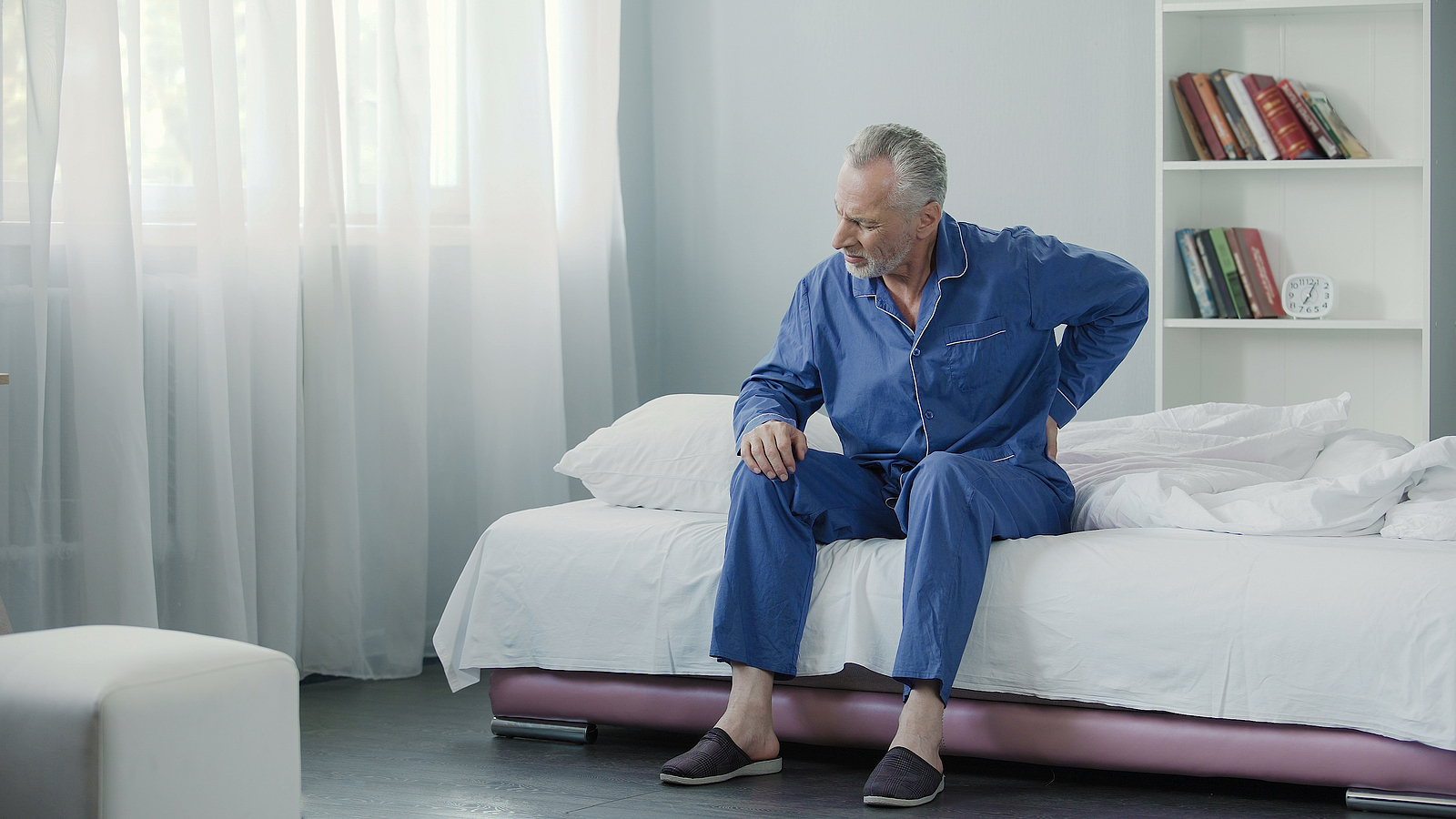Sure, the added wisdom is great, but otherwise, most things tend to become more difficult as we age.
And unfortunately, this includes a lot of the everyday tasks we used to take for granted, like getting in and out of bed.
Reduced mobility, stiff and achy joints, and balance issues are a few of the common culprits that can make getting in/out of bed challenging for seniors.
And even though we can’t necessarily fix these side-effects of aging, seniors can still usually improve their efficiency and safety with bed mobility by mastering proper technique.
Which can drastically help seniors maintain their independence and reduce their risk of accidents in the home.
In this guide, we’ll discuss step-by-step tips on how seniors can safely get in and out of bed, as well as go over key assistive devices that can make the process easier.
We’ll also share some additional tips to help reduce fall risk as much as possible in the bedroom.
After reading, you’ll be ready to make yourself (or a senior you care for) safer and more independent at home.
Why Bed Safety Matters
Falls are one of the leading causes of injury among older adults and according to the NIH, most of these falls occur inside the home.
More specifically, we’re talking about the bathroom, the bedroom, and the stairs.
And for seniors with balance issues, arthritis, or limited mobility, getting in and out of bed can be particularly risky.
Personally, I see patients all the time that have fallen with both trying to get in and out of bed.
Missteps, loss of balance, and accidentally sliding off the bed are all too common and they can all result in serious injury.
And yes, sliding off the edge of the bed and sitting on the floor counts as a fall (my patients tell me all the time that they didn’t ‘fall’, they just accidentally sat on the floor…)
Fortunately, adopting the right strategies and can greatly reduce the likelihood of accidents.
By following proper techniques, seniors can:
- Avoid falls and injuries
- Reduce strain on joints and muscles
- Maintain independence in their daily routine
Fall risk reduction is paramount for seniors, but sometimes improving technique can just make the whole process easier and less exhausting.
I’ve worked with plenty of seniors that haven’t had any bedroom falls, but had a hard time getting in/out of bed because of weakness or poor technique.
Either way, knowing the right way to access your bed can make all the difference in the world.
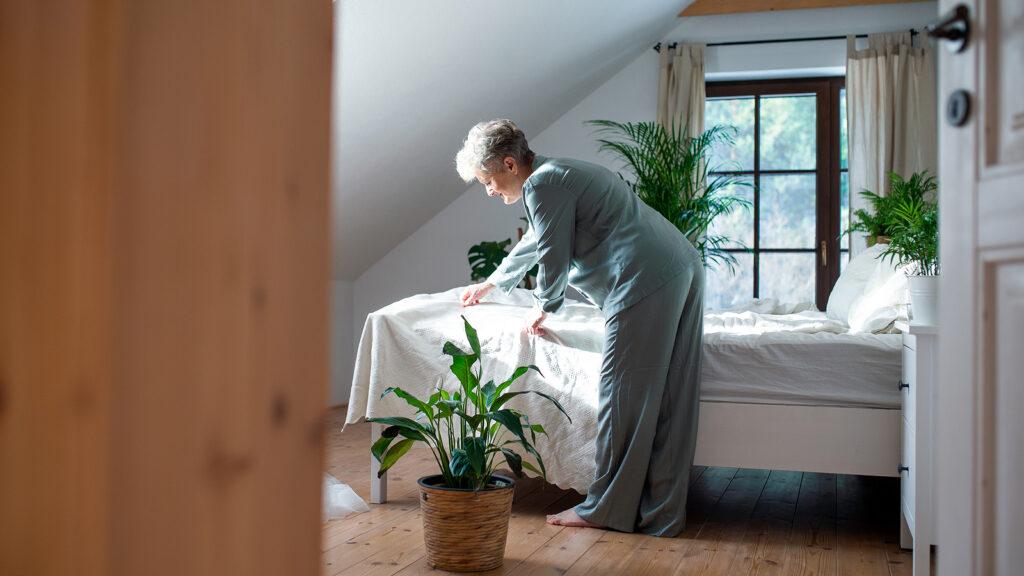
Getting In and Out of Bed Safely
Seniors without mobility deficits may be able to get into bed safely in several different ways, but the below process is great because it puts little stress on the body and uses your own momentum to make the movement as easy as possible.
How to Get Into Bed The Right Way
- Stand Close to the Bed
Position yourself near the side of the bed, ensuring that the bed is at a comfortable height (preferably about knee-level). If the bed is too high, consider using a lower bed frame or a step stool with handrails for stability. - Sit Down Slowly
With your back facing the bed, slowly lower yourself into a seated position on the edge of the bed. Keep your hands on the bed for support and lower yourself using your legs and core muscles. Avoid “plopping” down, which can strain your body and throw off your balance. - Swing Your Legs Up
Once seated, shift your weight onto one side as you gently lift your legs onto the bed. Swing both legs up at the same time, using your arms to assist if needed. If you have mobility issues, try placing one leg at a time onto the bed (but using the momentum of your trunk as you go on your side can help make it easier to bring your legs up). - Position Your Body Comfortably
After getting both legs onto the bed, use your arms to adjust your body into a comfortable lying position. Make sure your back and neck are well-supported by pillows, and keep your legs slightly bent to reduce pressure on the lower back. - Adjust the Covers
Once you’re comfortably positioned, pull the blankets or sheets up to cover yourself.
How to Get Out of Bed Safely
Getting out of bed is essentially the opposite of getting in bed:
- Shift to the Edge of the Bed
To start, roll onto your side near the edge of the bed. Keep your knees bent and place your arms in front of you for balance. - Swing Your Legs Over the Side
Gently swing both legs over the edge of the bed, allowing your feet to touch the floor (if the bed is low enough). Keep your movements slow and controlled to avoid feeling dizzy. - Push Yourself into a Sitting Position
Use your arms to push your upper body off the bed while swinging your legs down. Keep your back straight and use your core muscles to assist with the movement. Sit on the edge of the bed for a few moments to allow your body to adjust, especially if you feel lightheaded. - Stand Up Slowly
Once you’re seated and steady, place your hands on the bed (or on a bedside rail) for support. Push yourself up to stand slowly, using your legs and arms for stability. Make sure to keep your feet firmly planted on the floor as you stand. - Pause Before Walking
After standing, take a moment to ensure you feel balanced and steady before walking. If needed, use a walker or cane for additional support when moving away from the bed.
Assistive Devices to Help Seniors Get In and Out of Bed
There are several devices that can make getting in and out of bed safer and easier for seniors. Here are a few options to consider:
1. Bed Rails
Bed rails provide a sturdy support structure that seniors can hold onto while transitioning in and out of bed.
These rails attach to the side of the bed and offer extra stability, making it easier to sit down, stand up, or adjust position while in bed.
They can be a huge help when it comes to rolling in bed too.
Bed rails come in all kinds of shapes and sizes these days, but I’ve always had good results with rails that have adjustable legs – they’re easy to install, highly effective, and able to fit most beds.
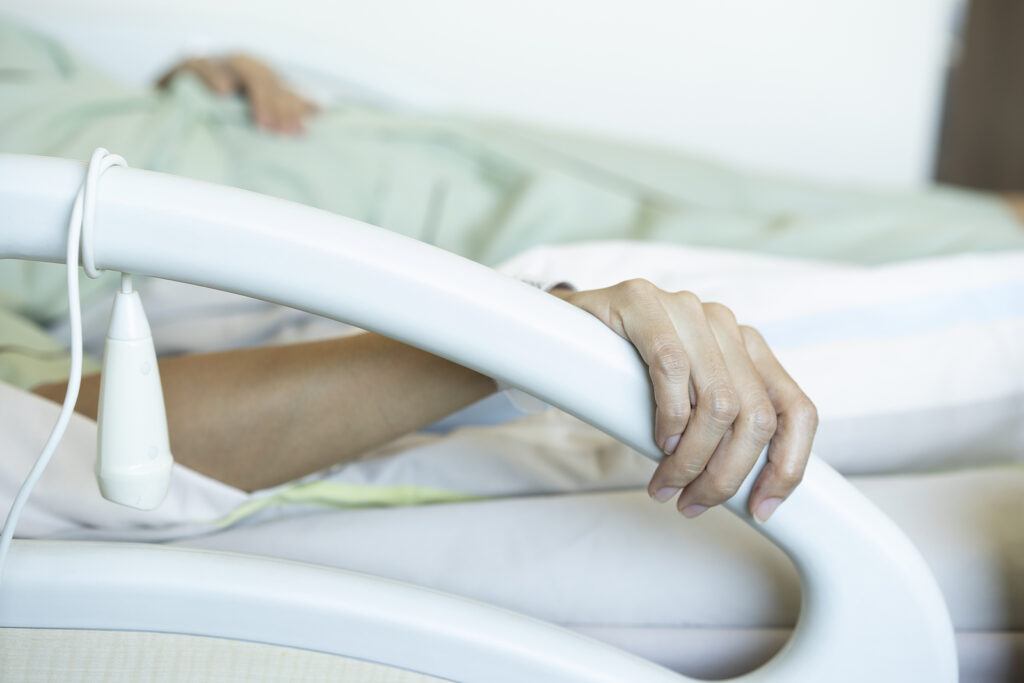
2. Leg Lifters
A leg lifter is a long strap with loops on both ends, designed to help seniors lift their legs onto or off of the bed.
This tool is especially useful for those with limited leg strength or mobility.
This simple tool allows you to use your arms to help elevate your leg in/out of bed, but it could be used in other situations as well.
3. Bed Step Stools
For seniors who find it difficult to get into a high bed, a step stool with handrails can provide extra height and support.
Look for models with non-slip surfaces and sturdy handrails for added safety.
And if you have an especially handy family member, you can even build your own.
4. Reacher Tools
Reachers are long, extendable tools that can help seniors adjust blankets or retrieve items without straining or overreaching.
These can be particularly helpful for those with limited flexibility.
Just be careful when using them to reach something that’s fallen onto the floor – I’ve had patients accidentally fall out of bed when reaching too far to retrieve something that’s fallen out of bed.
5. Adjustable Beds
An adjustable bed allows seniors to raise or lower the head and foot of the bed for easier transitions in and out.
These beds can be particularly helpful for those with mobility or back issues.
Back in the day, hospital beds were the only option, but luckily, these days there are a lot of different (more comfortable beds to choose from).
Opting for an adjustable bed will likely come with a bigger investment, but the comfort and convenience they can provide may be worth it.
Tips for a Safe Bedroom Environment
Creating a safe bedroom environment can further reduce the risk of falls and injuries.
After all, if you can’t safely access your bed, it doesn’t really matter whether or not you know how to get in/out of it correctly.
Here are some tips to keep in mind:
- Keep the Floor Clear: Ensure that the area around the bed is free of obstacles like cords, rugs, or furniture that could cause tripping. Use non-slip mats if needed and make sure there’s plenty of room to safely access the bed.
- Install Nightlights: Poor lighting can increase the risk of falls, especially at night. Place nightlights along the path to the bathroom or other common nighttime destinations.
- Choose the Right Mattress Height: The bed should be low enough that seniors can sit on the edge with their feet flat on the floor, but high enough to make standing easier. If you need to lower the height of an overly high bed, sometimes removing the box-spring can make enough difference.
- Wear Non-Slip Footwear: Wearing slippers or socks with non-slip soles can help seniors maintain stability as they get out of bed.
- Use a Walker or Cane: For seniors with balance issues, keeping a walker or cane by the bedside can provide additional support when transitioning from bed to standing.
When to Seek Help
If a senior is struggling to get in and out of bed despite following these steps and using assistive devices, it may be time to consult a healthcare professional.
Occupational or physical therapists can offer personalized advice and recommend tools or exercises to improve mobility.
In some cases, caregivers or family members may need to provide hands-on assistance to ensure safety.
If you’re interested in getting a therapy consult, ask your doctor for a referral.
Final Thoughts
Getting in and out of bed may seem like a straightforward task, but you’d be amazed at how many falls occur when performing this daily duty.
Fortunately, a lot of these falls can be prevented by improving technique and focusing on a few key changes.
And for seniors, learning how to safely get in and out of bed is an important step toward maintaining independence and preventing injuries.
The steps mentioned in this guide are how we usually teach seniors to get in/out of bed, but that doesn’t mean you can’t tweak this procedure a little to fit your needs.
As long as it’s safe (and works), it should be ok.
That said, if you still have any concerns about your or a family member’s ability to safely get in/out of bed, please talk to the appropriate healthcare provider to seek out professional assistance.
Well, that about does it.
I hope you found this guide helpful and as always, if you have any questions or comments, just leave ’em below and I’ll get back to you shortly.
